39don
starting to spend too much on rocks
  https://www.etsy.com/shop/DonsLapidaryArts
https://www.etsy.com/shop/DonsLapidaryArts
Member since February 2012
Posts: 225 
|
Post by 39don on Dec 2, 2014 17:33:10 GMT -5
What I received was not Bruneau because I did tumbled some of the smaller pieces, creamy looking tan to yellowish colors. They didn't have that high porcelain polish like Bruneau is known for even though the agates in the batch did. I'm wondering if it's really Bruneau?   ?? 39don |
|
|
|
Post by catmandewe on Dec 2, 2014 17:50:26 GMT -5
I have some chunks of bruneau with no color or orbs if you want to use them for flintknapping.
|
|
|
|
Post by glennz01 on Dec 2, 2014 21:58:22 GMT -5
I have some chunks of bruneau with no color or orbs if you want to use them for flintknapping. Yeah if its "junky" practice stuff i'd be interested in that type of material. I'll be probably be practicing a lot of knapping over break starting the 11th when I get bored and don't want to or cant travel to my lapidary stuff. I wont be able to heat treat the stuff so anything I do will be all natural like the native americans did. |
|
Deleted
Deleted Member
Member since January 1970
Posts: 0
|
Post by Deleted on Dec 6, 2014 19:49:30 GMT -5
I wont be able to heat treat the stuff so anything I do will be all natural like the native americans did. Pretty sure the ancients heat treated at least 'some' material under campfires. I think jamesp has evidence of this in his corals. Jim? |
|
|
|
Post by glennz01 on Dec 6, 2014 21:10:29 GMT -5
I wont be able to heat treat the stuff so anything I do will be all natural like the native americans did. Pretty sure the ancients heat treated at least 'some' material under campfires. I think jamesp has evidence of this in his corals. Jim? yeah they probably did to an extent. If I can find a knappable piece I have a lot of pre treated flint ridge stuff. |
|
jamesp
Cave Dweller 
Member since October 2012
Posts: 36,612
|
Post by jamesp on Dec 6, 2014 21:30:37 GMT -5
I wont be able to heat treat the stuff so anything I do will be all natural like the native americans did. Pretty sure the ancients heat treated at least 'some' material under campfires. I think jamesp has evidence of this in his corals. Jim? Most artifacts in the southeast are heat treated. The Savannah River site was a massive mine and heat treating factory. I tumble the heated chips they leave behind because of the choice materials from locations they probably passed down over many generations. Coastal plain cherts and silicifications take well to heat for workability. |
|
|
|
Post by glennz01 on Dec 6, 2014 21:52:06 GMT -5
Pretty sure the ancients heat treated at least 'some' material under campfires. I think jamesp has evidence of this in his corals. Jim? Most artifacts in the southeast are heat treated. The Savannah River site was a massive mine and heat treating factory. I tumble the heated chips they leave behind because of the choice materials from locations they probably passed down over many generations. Coastal plain cherts and silicifications take well to heat for workability. How much does heat treating change the color? I know that in flint ridge it makes all the reds become more red so to speak |
|
spiritstone
Cave Dweller 
Member since August 2014
Posts: 2,061 
|
Post by spiritstone on Dec 6, 2014 22:09:34 GMT -5
Pretty sure the ancients heat treated at least 'some' material under campfires. I think jamesp has evidence of this in his corals. Jim? Most artifacts in the southeast are heat treated. The Savannah River site was a massive mine and heat treating factory. I tumble the heated chips they leave behind because of the choice materials from locations they probably passed down over many generations. Coastal plain cherts and silicifications take well to heat for workability. I might of missed this earlier. Whats the trick to keeping it on the stick and not falling into the campfire?  |
|
|
|
Post by glennz01 on Dec 6, 2014 22:14:08 GMT -5
Most artifacts in the southeast are heat treated. The Savannah River site was a massive mine and heat treating factory. I tumble the heated chips they leave behind because of the choice materials from locations they probably passed down over many generations. Coastal plain cherts and silicifications take well to heat for workability. I might of missed this earlier. Whats the trick to keeping it on the stick and not falling into the campfire?  lots of sand and a strong stick! |
|
spiritstone
Cave Dweller 
Member since August 2014
Posts: 2,061 
|
Post by spiritstone on Dec 6, 2014 22:19:44 GMT -5
I might of missed this earlier. Whats the trick to keeping it on the stick and not falling into the campfire?  lots of sand and a strong stick! I like this train of thought and I need to remember to try this out with a few rocks, and see what the outcomes may turn out like. Thanks glennz. |
|
Deleted
Deleted Member
Member since January 1970
Posts: 0
|
Post by Deleted on Dec 6, 2014 22:29:32 GMT -5
No stick.
Buried under, close to the coals.
|
|
|
|
Post by glennz01 on Dec 6, 2014 23:06:25 GMT -5
lots of sand and a strong stick! I like this train of thought and I need to remember to try this out with a few rocks, and see what the outcomes may turn out like. Thanks glennz. Glad I could help (I guess  ) I would suggest using tumbling grit instead of sand though.. might make things go a little faster possibly. I don't think Shotgunner got the joke... Think marshmallows Shotgunner!  |
|
jamesp
Cave Dweller 
Member since October 2012
Posts: 36,612
|
Post by jamesp on Dec 6, 2014 23:29:27 GMT -5
colors from heating-coral Before 1 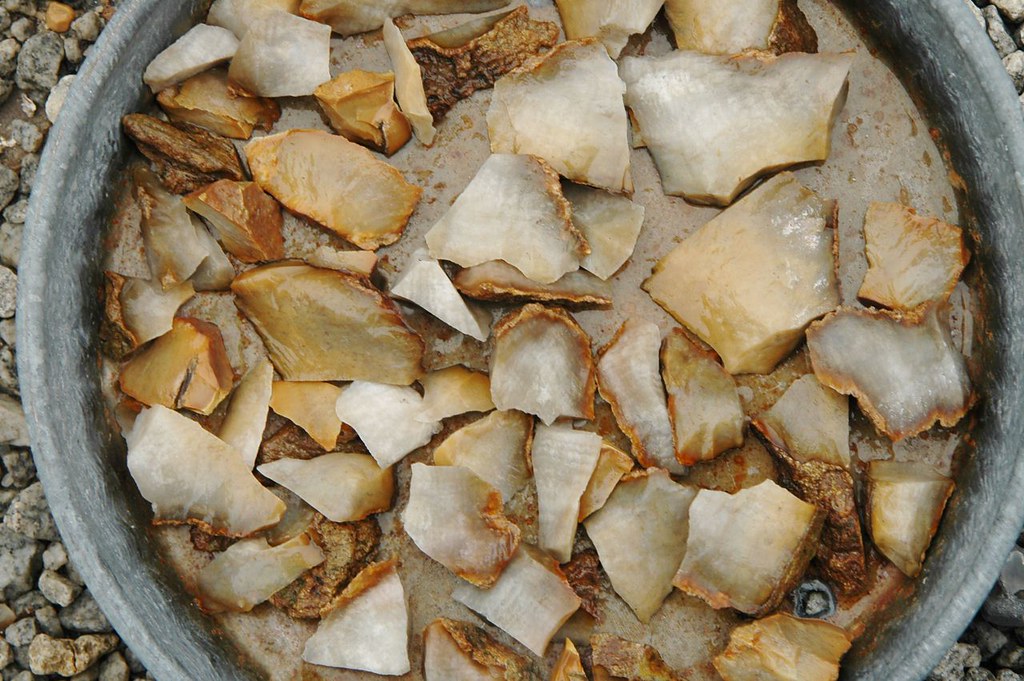 After 1 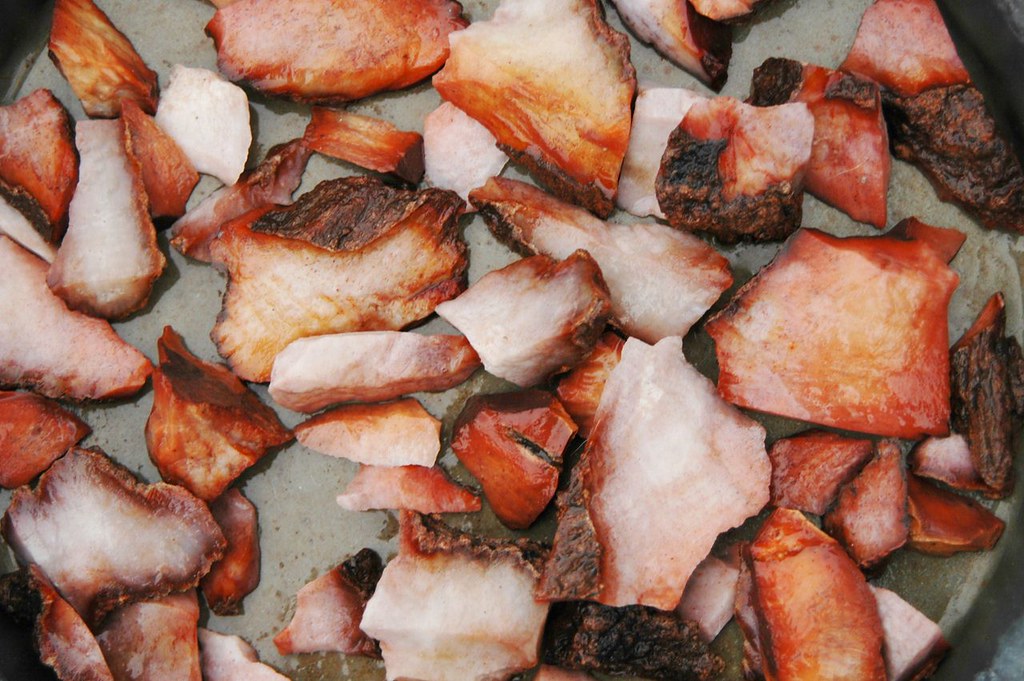 Before 2  After 2 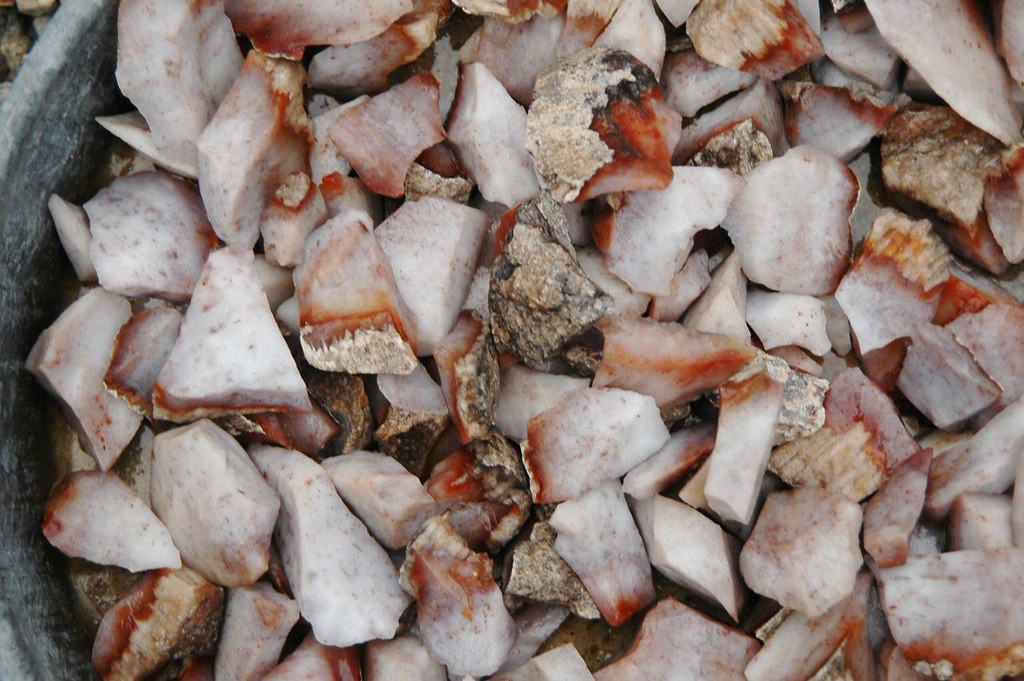 Before 3 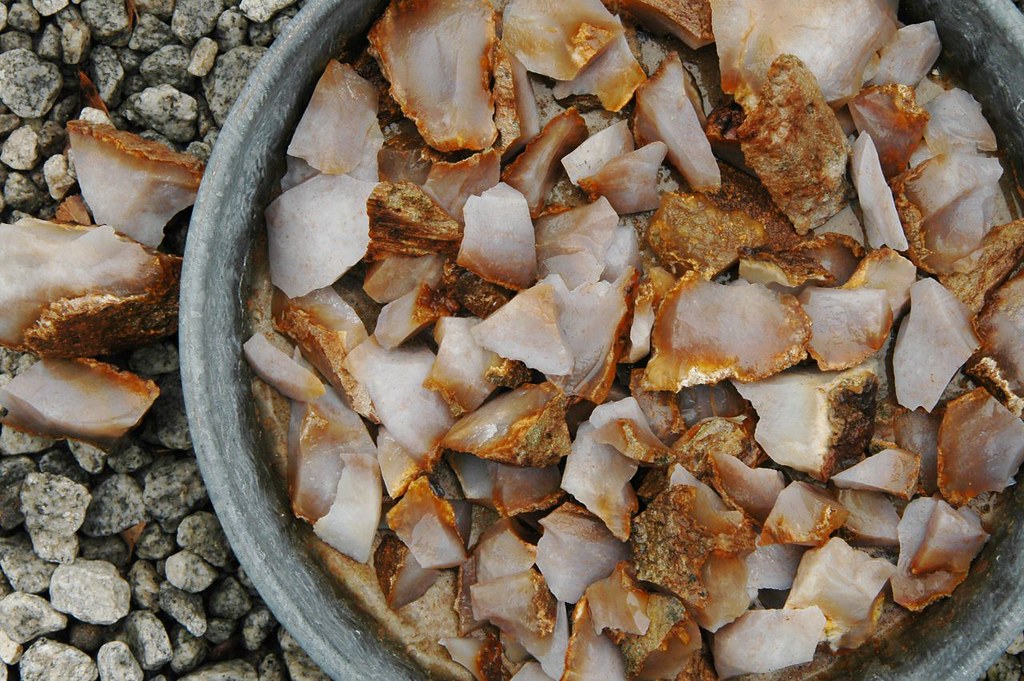 After 3 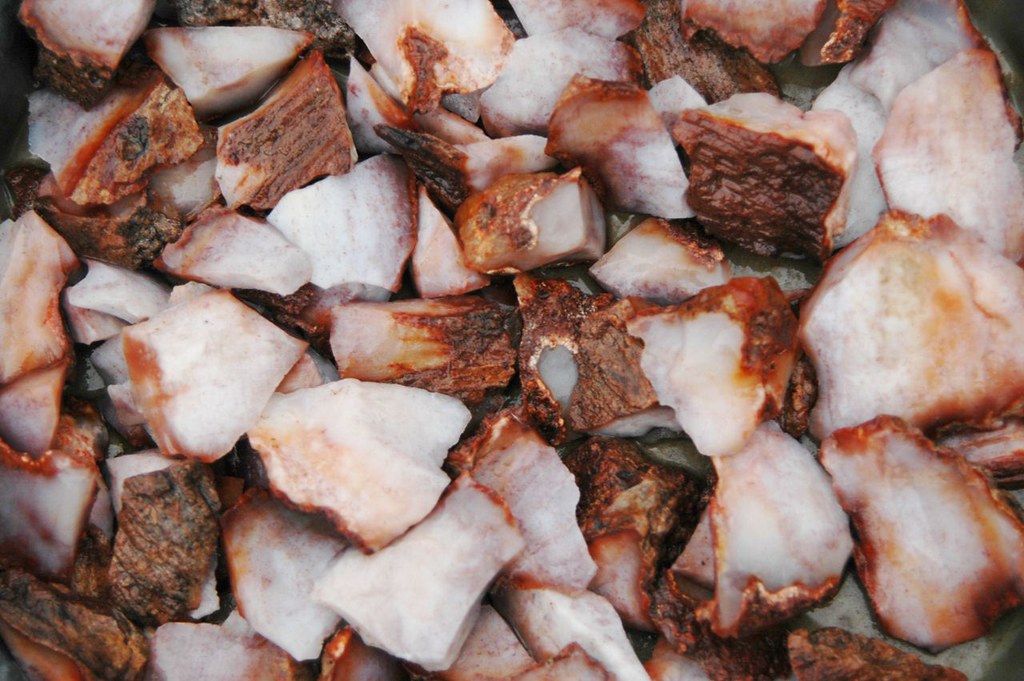 Before 4  After 4  Before 5  after 5  last year's colors 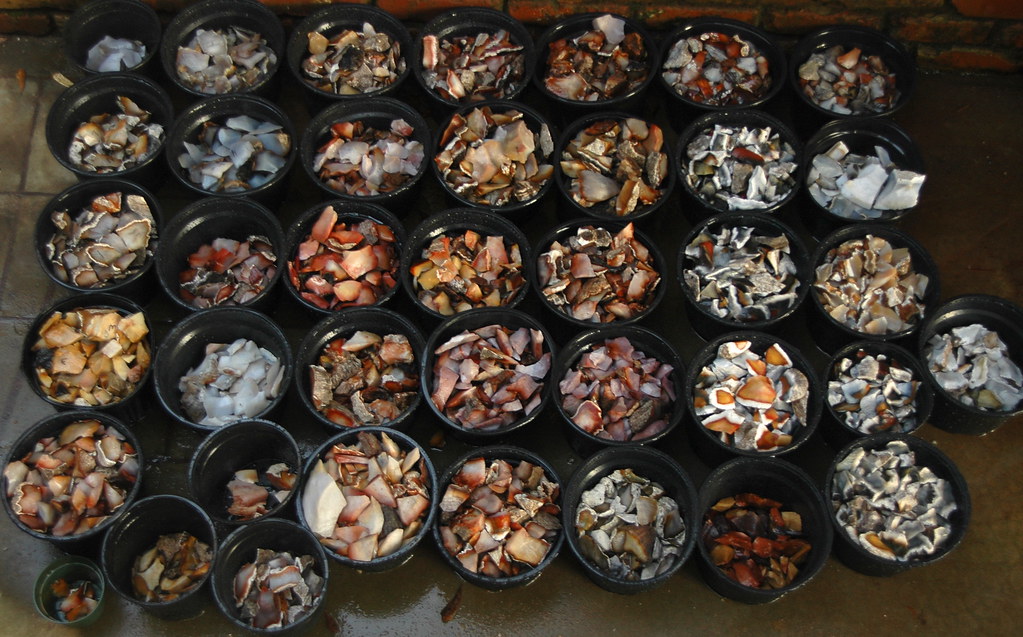 glennz01 glennz01 marshmallow:  |
|
|
|
Post by glennz01 on Dec 6, 2014 23:58:03 GMT -5
Thats a huge color change, Although I think some look better natural  colors from heating-coral |
|
jamesp
Cave Dweller 
Member since October 2012
Posts: 36,612
|
Post by jamesp on Dec 7, 2014 0:01:53 GMT -5
Thats a huge color change, Although I think some look better natural  colors from heating-coral The deeper yellows oranges reds and blacks are from heat. The lighter stuff not heated. So a mix in the buckets. |
|
|
|
Post by catmandewe on Dec 7, 2014 0:26:33 GMT -5
At the Polka dot agate mine there was a cave inside a wall of agate, the indians would build a fire inside the cave and get it hot in there then throw cold water on the ceiling and fracture the agate so it would fall out and they would use that for knapping.
Tony
|
|
|
|
Post by glennz01 on Dec 7, 2014 0:38:19 GMT -5
At the Polka dot agate mine there was a cave inside a wall of agate, the indians would build a fire inside the cave and get it hot in there then throw cold water on the ceiling and fracture the agate so it would fall out and they would use that for knapping. Tony wow... that would be a sight to see.. got a pic? I can't imagine that much agate |
|
|
|
Post by catmandewe on Dec 7, 2014 0:43:15 GMT -5
I saw it along time ago but the hole has since been filled in and NO I did not get a picture.
|
|
|
|
Post by glennz01 on Dec 7, 2014 0:51:15 GMT -5
I saw it along time ago but the hole has since been filled in and NO I did not get a picture. that's a shame, they should have left the hole open if the natives used it. |
|
jamesp
Cave Dweller 
Member since October 2012
Posts: 36,612
|
Post by jamesp on Dec 7, 2014 8:38:33 GMT -5
Makes good sense to break it with heat. They had no steel hammers and chisels.
|
|